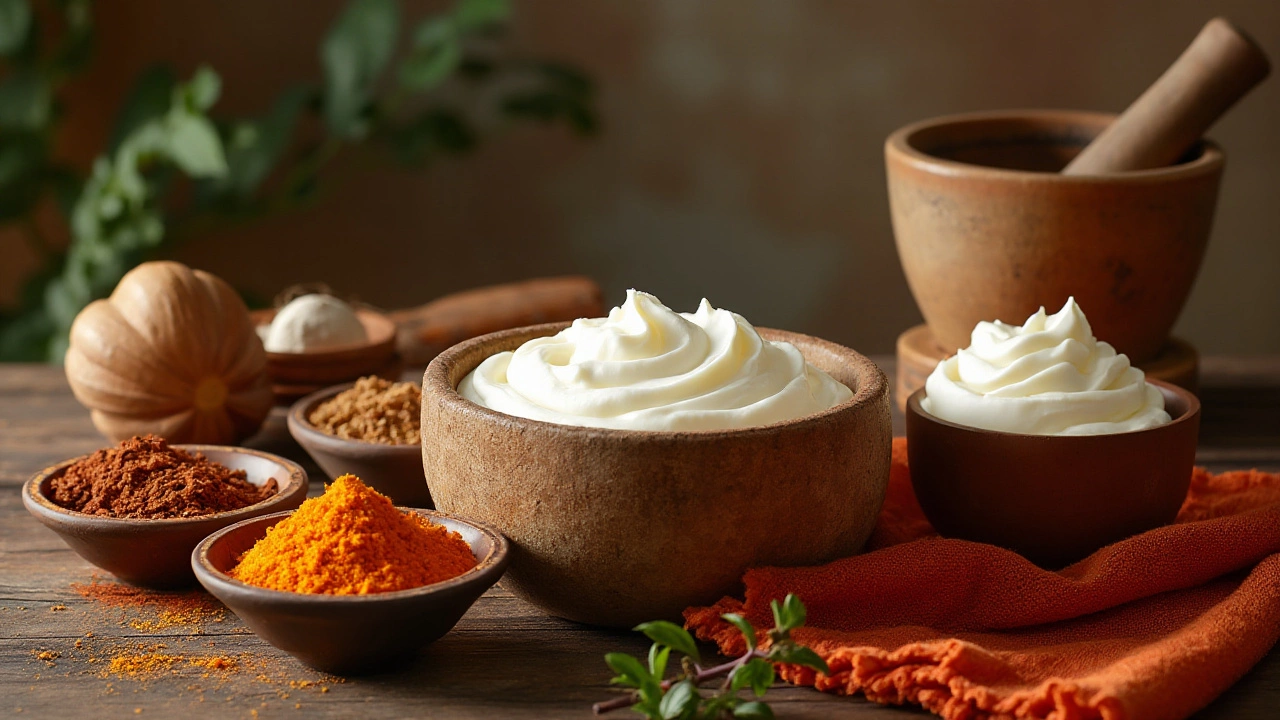Yogurt Alternatives: Dairy‑Free Picks for Indian Cooking
When working with Yogurt alternatives, non‑dairy substitutes that mimic the tangy creaminess of traditional yogurt. Also known as dairy‑free yogurt, they let you keep the classic flavor profile while avoiding dairy.
One of the biggest reasons people reach for yogurt alternatives is the rise of lactose intolerance and vegan diets. The core idea is to replace the milk‑based starter with something that can ferment or be blended to a thick consistency. Tofu, a soy‑derived curd, provides a neutral base that absorbs spices easily and works well in savory dishes like raita or kadhi. Its high protein content makes it a sturdy stand‑in, especially when pressed and blended with a splash of lemon juice to add that familiar bite.
Another popular player is Coconut milk, the creamy liquid squeezed from grated coconut flesh. When chilled and mixed with a probiotic starter, it thickens into a lush, slightly sweet yogurt that pairs beautifully with mango or spices. Cashew cream, soaked and blended cashews that turn silky and thick is a third favorite; its mild flavor lets you customize the tang by adding a dash of apple cider vinegar or a pinch of salt.
These alternatives aren’t just swaps; they change how you build classic Indian items. For a cooling cucumber raita, blend tofu or cashew cream with cumin, coriander, and a splash of lemon. In a lassi, swirl coconut‑milk yogurt with fresh fruit and a pinch of cardamom for a tropical twist. Even kadhi can be rescued by whisking coconut‑milk yogurt into chickpea flour, letting the mixture simmer until it thickens and the flavors meld.
Nutrition-wise, each option brings its own perks. Tofu adds plant‑based protein and iron, coconut milk supplies medium‑chain triglycerides that boost quick energy, and cashews deliver healthy fats and magnesium. The key is to watch the added sugars; many commercial dairy‑free yogurts come sweetened, so DIY versions give you full control. Remember to taste as you go – a little acidity can balance the natural sweetness of nuts and coconut.
Practical tips can save you time. Store tofu‑based yogurt in a clean glass jar, cover loosely, and let it sit at room temperature for 6–12 hours before refrigerating. Coconut‑milk yogurt benefits from a warm spot (around 30 °C) during fermentation, then a cold fridge to set. Cashew cream thickens faster if you blend it with a high‑speed mixer and add a teaspoon of probiotic powder.
How to Choose the Right Yogurt Alternative
Pick tofu when you need a high‑protein, neutral canvas for savory recipes. Reach for coconut milk if you love a hint of tropical flavor and want a richer texture. Opt for cashew cream for a mild, buttery base that works in both sweet and salty dishes. Whatever you choose, the principle stays the same: create a creamy, tangy base that can carry the spices and herbs you love.
Below you’ll find a curated set of articles that dive deeper into each alternative, show you how to swap them into classic dishes, and share troubleshooting tricks. Browse the list to discover which substitute fits your pantry, taste buds, and cooking style best.

Best Alternatives to Indian Yogurt for Tandoori Chicken
Indian yogurt, known as dahi, is a key ingredient in traditional tandoori chicken recipes. However, finding a suitable substitute can be essential for those who are lactose intolerant, vegan, or simply out of yogurt at home. This article explores various alternatives such as Greek yogurt, coconut milk yogurt, and more unusual options like cashew cream, offering tips on how they can be used effectively in the marination process. Understanding these alternatives can help recreate authentic flavors while accommodating dietary preferences.